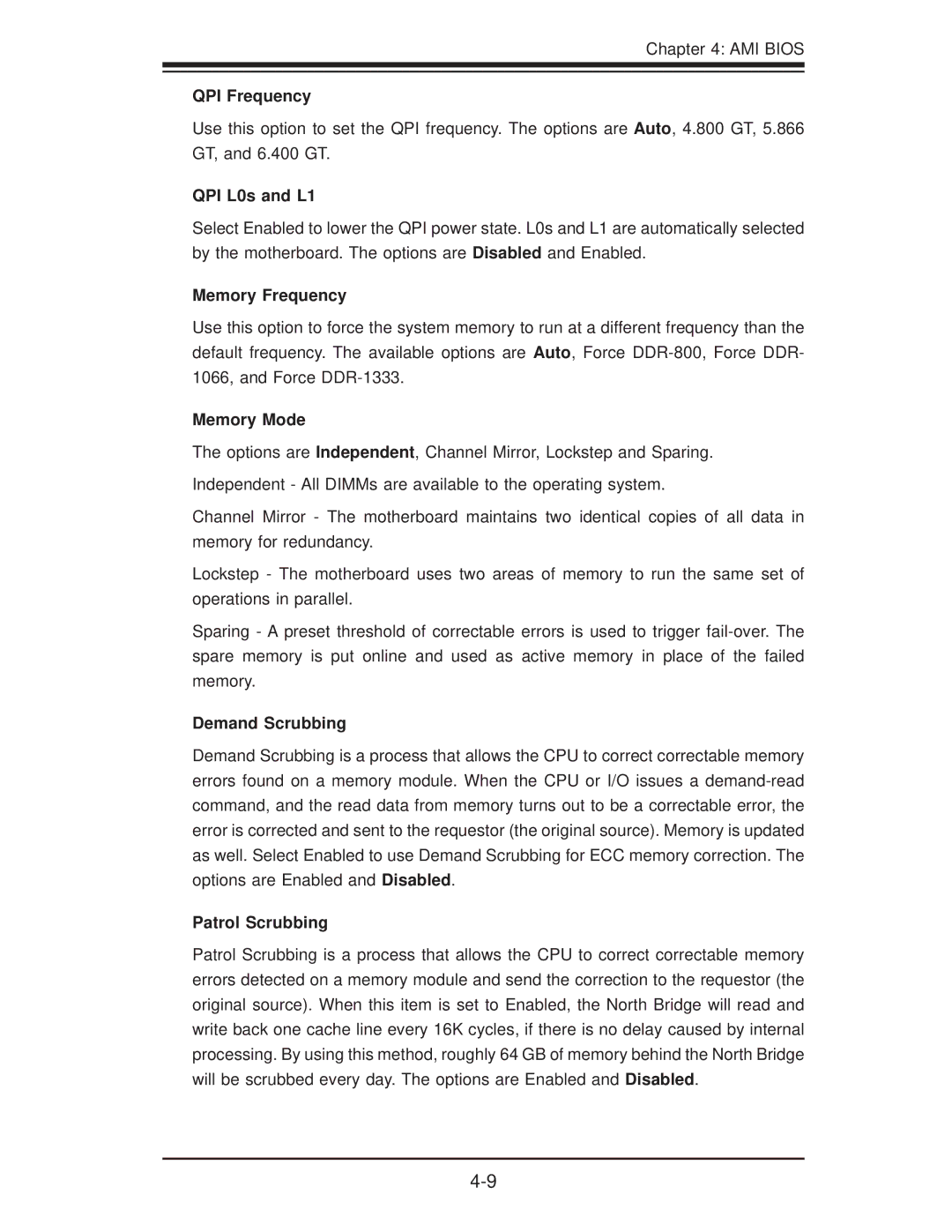
Chapter 4: AMI BIOS
QPI Frequency
Use this option to set the QPI frequency. The options are Auto, 4.800 GT, 5.866 GT, and 6.400 GT.
QPI L0s and L1
Select Enabled to lower the QPI power state. L0s and L1 are automatically selected by the motherboard. The options are Disabled and Enabled.
Memory Frequency
Use this option to force the system memory to run at a different frequency than the default frequency. The available options are Auto, Force
Memory Mode
The options are Independent, Channel Mirror, Lockstep and Sparing.
Independent - All DIMMs are available to the operating system.
Channel Mirror - The motherboard maintains two identical copies of all data in memory for redundancy.
Lockstep - The motherboard uses two areas of memory to run the same set of operations in parallel.
Sparing - A preset threshold of correctable errors is used to trigger
Demand Scrubbing
Demand Scrubbing is a process that allows the CPU to correct correctable memory errors found on a memory module. When the CPU or I/O issues a
Patrol Scrubbing
Patrol Scrubbing is a process that allows the CPU to correct correctable memory errors detected on a memory module and send the correction to the requestor (the original source). When this item is set to Enabled, the North Bridge will read and write back one cache line every 16K cycles, if there is no delay caused by internal processing. By using this method, roughly 64 GB of memory behind the North Bridge will be scrubbed every day. The options are Enabled and Disabled.
